Figueres lies about 150km north of Barcelona, almost to the French border.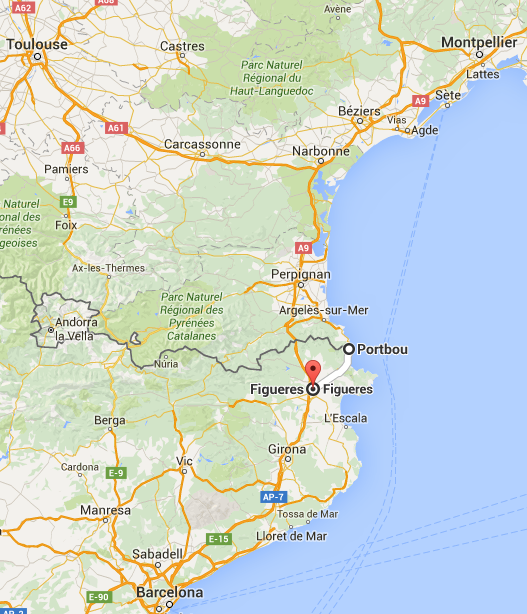 Figueres is famous as the birthplace of Salvador Dalí, and has enough of interest for a week (two weeks with a car).
Figueres is famous as the birthplace of Salvador Dalí, and has enough of interest for a week (two weeks with a car).
You can drive, or take the very convenient Renfe train. We chose to take the scenic coastal train (RG1 through Mataró) rather than the inland train (R1 to Maçanet-Massanes). Both trains pass through Barcelona Sants and Plaza Catalonia but take different routes until Maçanet-Massanes, after which they are the same. It took us about 90 minutes from home to Figueres.
Our train, for under €10 each, took us along the Maresme coast to Blanes (the start of the Costa Brava) then headed inland past the weekend market town of Tordera, to Maçanet-Massanes and then north. From Maçanet-Massanes the train follows a river for part of the trip- a river with water flowing! Much of the trip is relatively flat with mountains occasionally visible inland.
The main stop en route is the city of Girona- 100,000 people and capital of the province of the same name (within the autonomous region of Catalonia). Girona has a famous ancient Jewish quarter and was the site of many notable wars due to its convenient location en route to France, with the Pyrenees limiting options for transporting armies; it remains a future destination of exploration for us.
We had an easy walk from the Figueres train station to our hotel- the Museum Apartments– which is located right next door to the main Salvador Dalí museum, and opposite the central church. The hotel is new, modern and very welcoming; from our room we had a great view of the museum, a project by the not-so-humble Dalí. We watched a BBC documentary- Salvador Dalí: A Master of the Modern Era– in preparation, especially since there is so much popular information about him and his works.
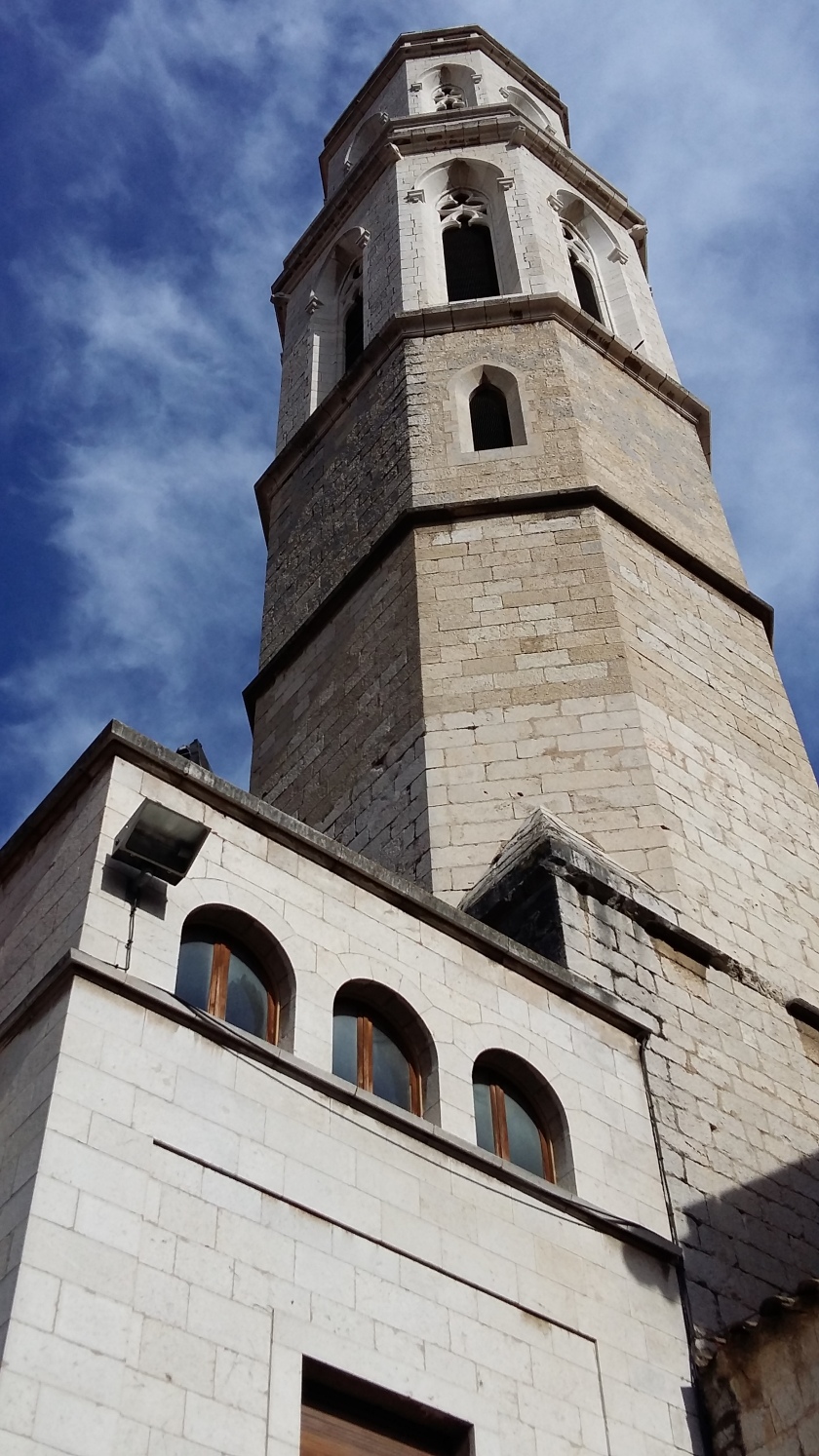
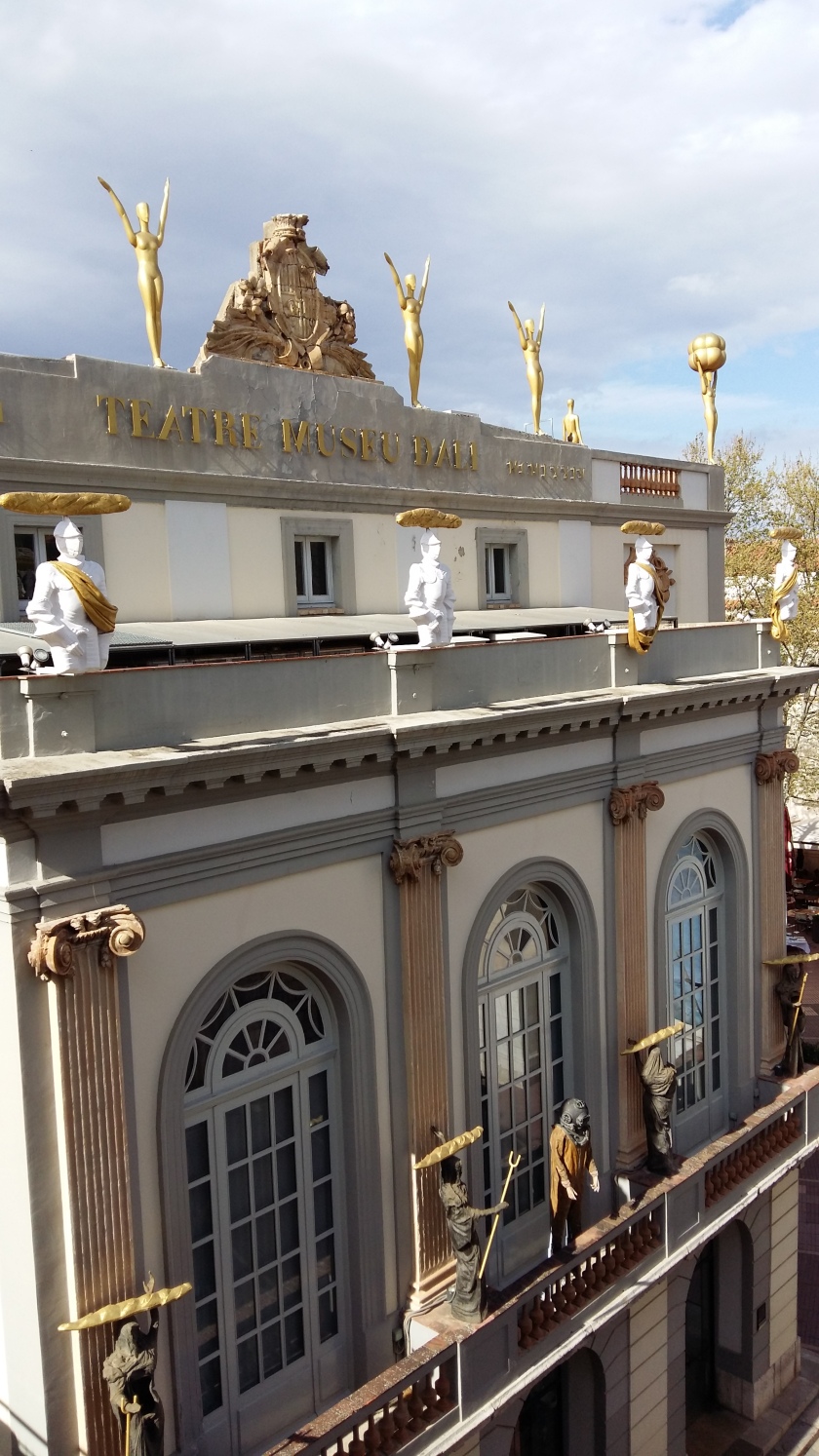
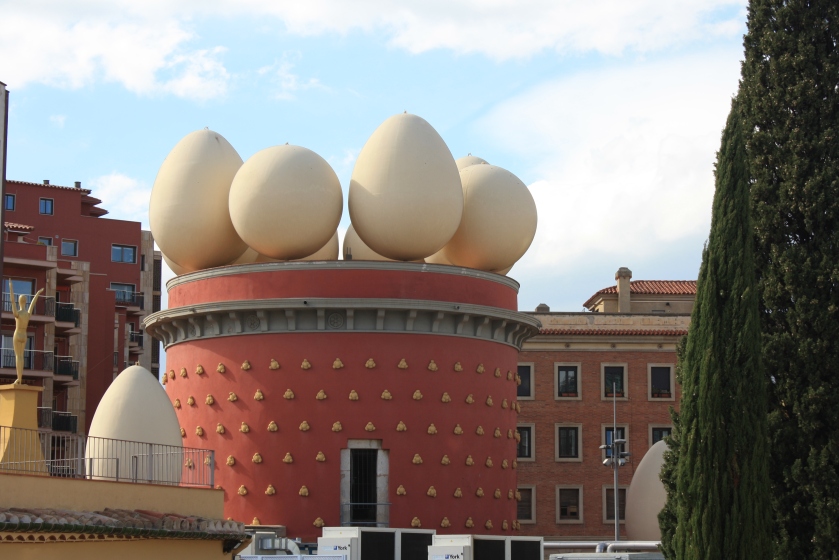
The following morning we visited the museum, having purchased our tickets online in advance (@€14). The crowds were thin at the start and grew; and this is April- clearly a good time to visit. Dalí was much more than a painter- although perhaps his best work was his painting- and tried his hand at many mediums from jewellery to movies and advertising. I think his Alka Seltzer ad was really good (check YouTube)!
Spain has produced many famous painters, perhaps because of the extreme environment it provided through church and culture; Dalí’s father apparently was even more polarising. From the museum you can see works from several of his key periods; perhaps my favourite is his 1952 Galatea of the Spheres.
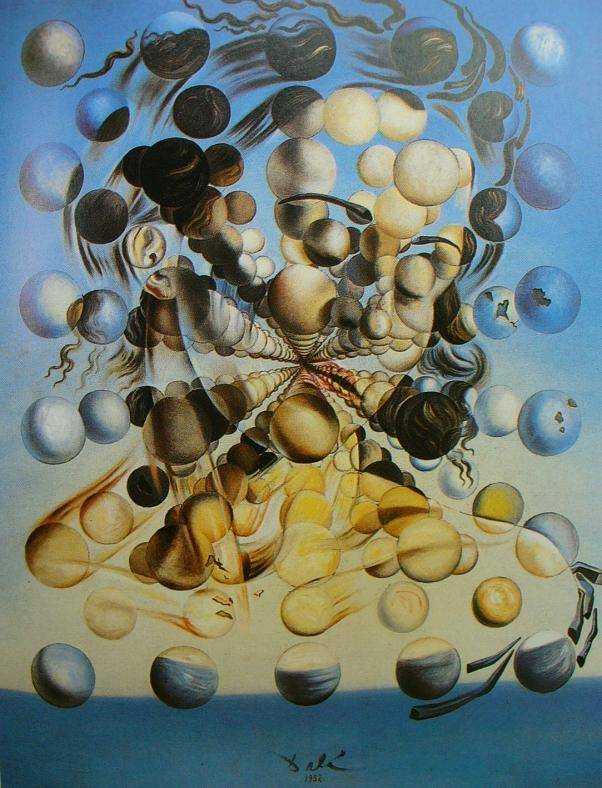
Lots of good works, some excellent, some less serious to me, and references to NY’s MOMA; another must-see. From the museum we migrated to Cap i Pota– an excellent restaurant within easy walking distance.
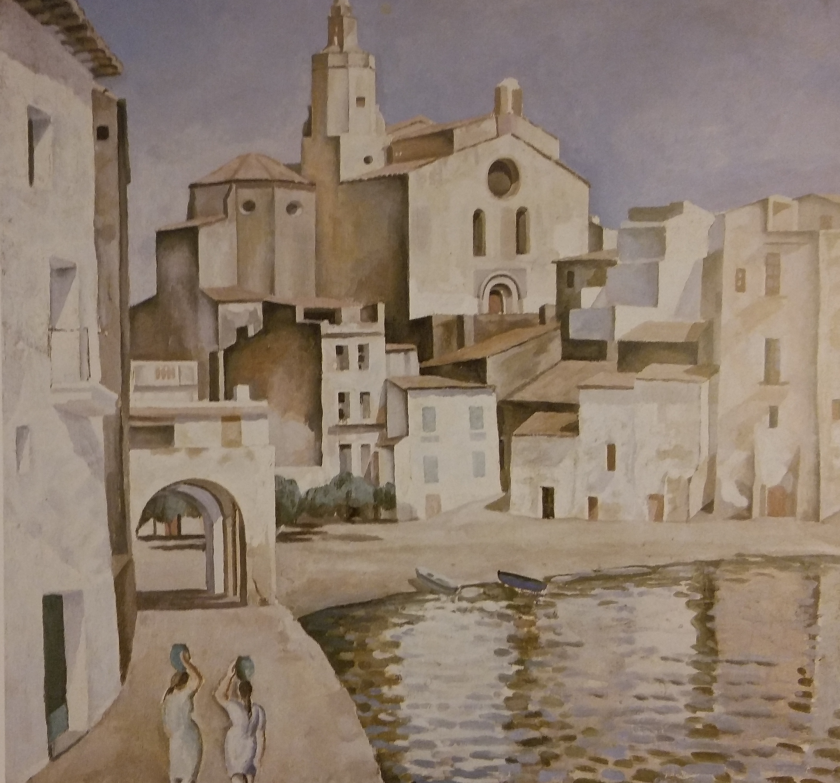
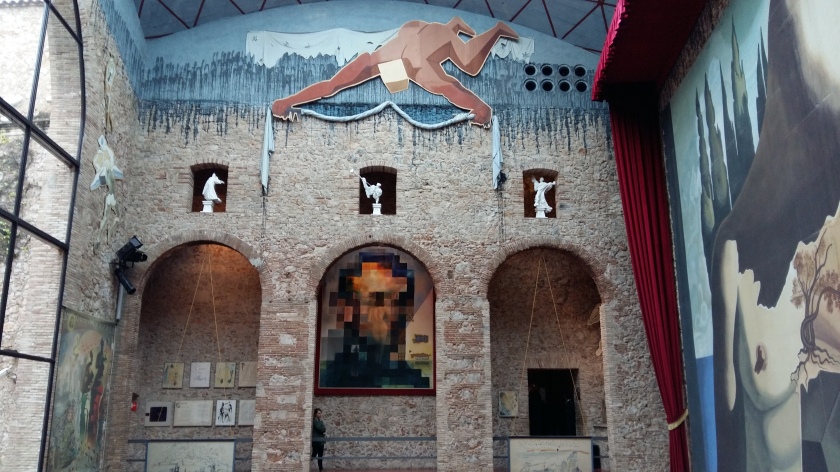
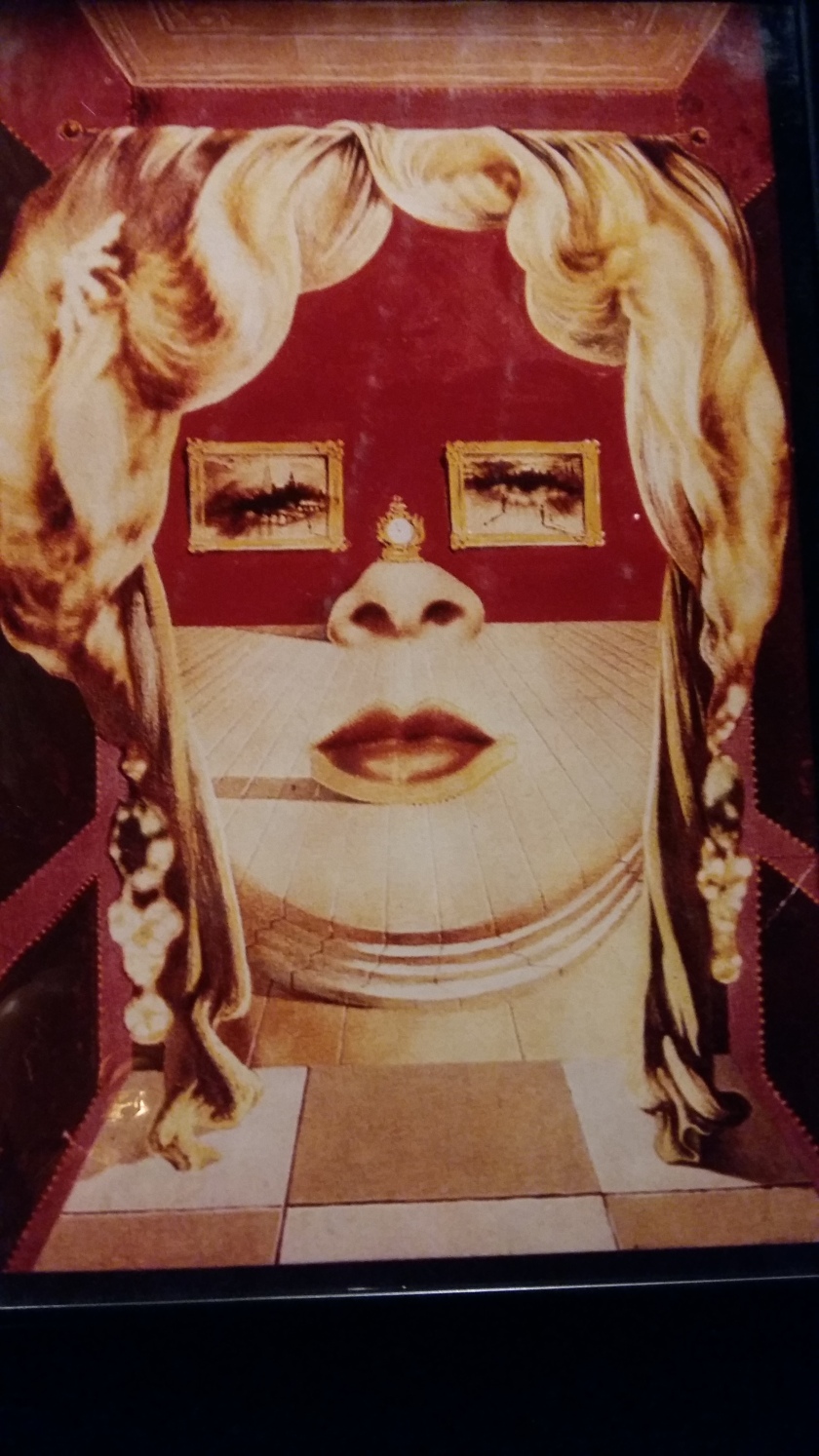
The next day the weather was still blowing away yesterday’s rain as we walked back to the Renfe station and took the train to Portbou- the end of the line. The train takes half an hour, starting on the flats then plunging through the hills to arrive at the coast and then eventually Portbou. Portbou is a small town with an oversized railway station of yesteryear.
Europe has standardised on “standard gauge” 1.435m rails, however there are a few exceptions including Spain. The story goes that the Spanish were worried about more French invasions so they chose to use the wider 1.668m gauge to complicate the logistics for the French army. The official reason cited was due to the mountainous nature of Spain’s terrain- it required large locomotives and hence the larger gauge to support them; unfortunately this also requires more blasting to cut a track into a mountain. And other European countries with mountainous terrain standardised on the narrower gauge.
And thus Portbou- on the French/ Spanish border has major rail facilities, as does Cerbere on the French side. Even today, goods trains can’t just flow across the border without changing gauge. Spain is working to convert all tracks to standard gauge, but that will take decades; the first priority is high speed passenger trains. And hence Spain has its own railway standard, which must be expensive! And in early days Portbou needed such a large railway station with a Spanish side and a French side- from the days before the Schengen Agreement and borderless travel within Europe.
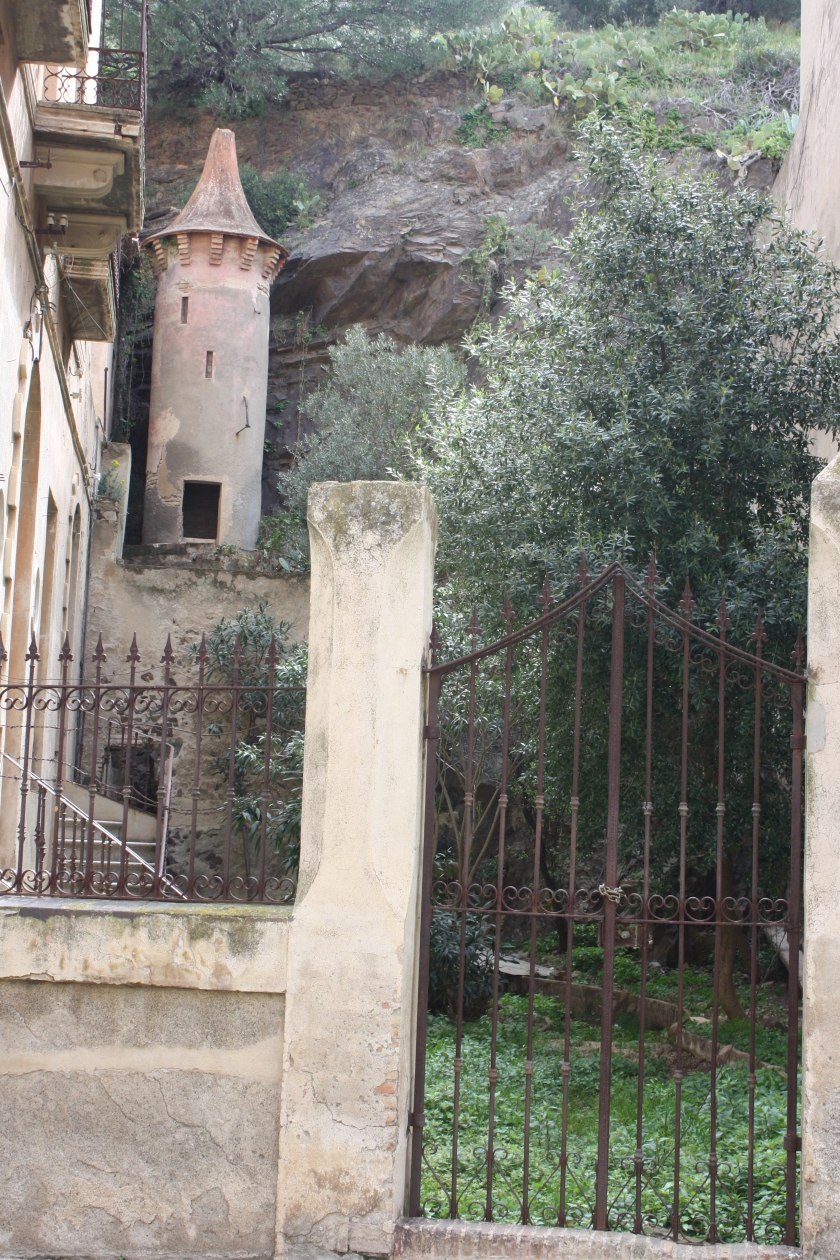
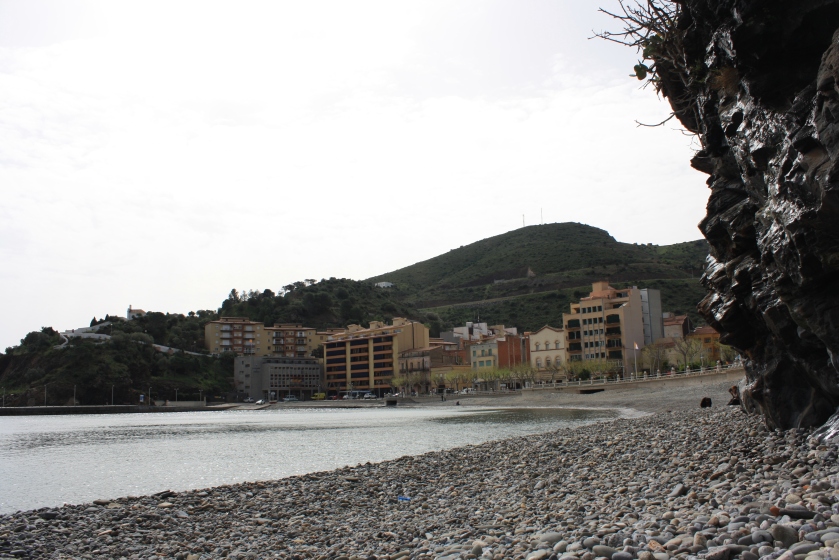
Portbou town is small and quiet, but not dead. There is little accommodation but some nice restaurants and cafes and a pebble beach for warmer days. The town has hills surrounding it, and you can watch the RV’s crawling up the hill and over into France. We had a very nice lunch at Riky’s- the fried small fish appetiser was excellent! I had originally considered basing out of Portbou for the week- instead of Figueres- but in hindsight too small and quiet. But a side trip up to Cerbere could be interesting- via train or walking.
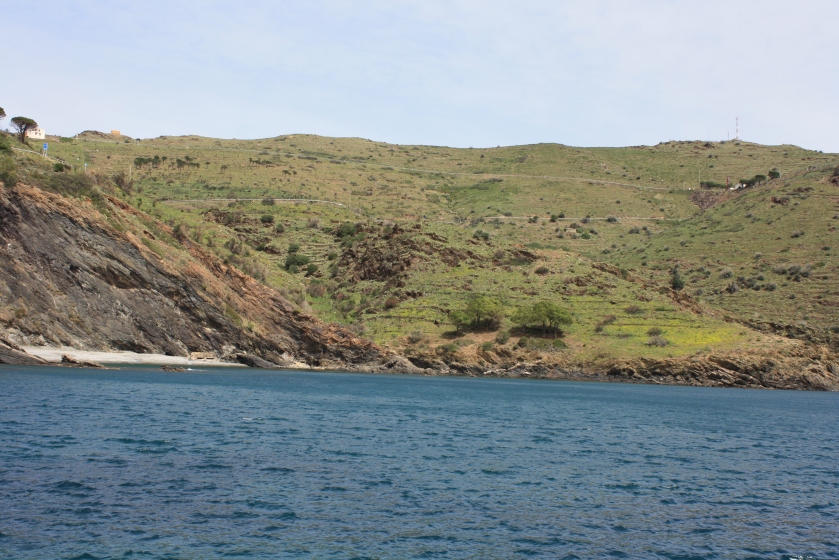
On our fourth day in Figueres and area we took a walk to the Sant Ferran castle (Castillo de San Fernando, in Spanish)- an easy walk to the top of the hill where a convent was evicted to make way for a large barrack after the 1659 Treaty of the Pyrenees which granted considerable land to France (sometimes called “Catalonia North”) and also restricted Spain’s defensive capabilities near the border. Figueres appealed to the engineers for its strategic location.
The castle is now largely a ruin following many wars, not least the Spanish civil war, and offers limited explanation of its history. But it offers a photogenic set of buildings and ruins atop a hill with the Pyrenees in the background, as well as a nice walk.
We are told by our olive vendor that with a car the local towns are well worth visiting, photographing and sampling their restaurants.





